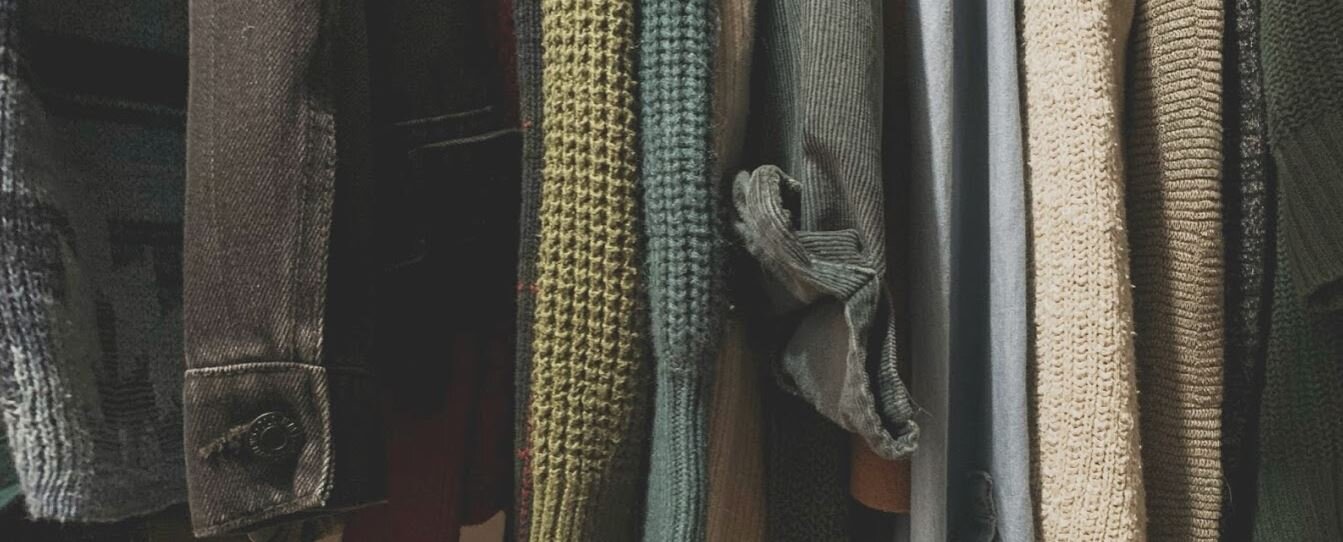The first time I heard about the problems of fast fashion, I skimmed the blog and forgot it as soon as possible.
The scale of the problem overwhelmed me. Justifying my apathy, I reasoned that I didn’t buy that many clothes after all, and it’s not like I personally was putting a woman in slavery. That woman was halfway around the world. The fashion industry and capitalism were to blame – not me. Even if I did try to buy consciously, it wouldn’t make a difference. Furthermore, I couldn’t afford it as a “poor” college student. All complete lies.
The sad thing about the big problems of the world right now is that no one thinks they are responsible. It’s someone else’s problem. But if you have wealth and security, it is your duty to watch out for those who do not.
Fast forward a few years later. I’m studying the book of James with my community group, and we read this verse in chapter 5: “Behold, the wages of the laborers who mowed your fields, which you kept back by fraud, are crying out against you, and the cries of the harvesters have reached the ears of the Lord of hosts. You have lived on the earth in luxury and in self-indulgence.”
I believe that the Bible is always applicable to our lives. Perhaps the scene feels outdated, but there is truth there. I don’t own fields, but I do wear cotton. I don’t manage harvesters, but I do buy clothing stitched in factories. In the modern age, we are so far separated from the actual origin of our purchases that we forget that an actual human was involved in the making of that purchase. Our purchases affect other people’s livelihoods.
If you take your responsibility seriously, you need to ensure your purchases are both ethical (good for people) and sustainable (good for the world). Here’s a few tips I’ve learned over the past year:
Watch out for greenwash. Don’t assume that something is eco-friendly or ethical just because the label says it is. In fact, assume that it’s not until proven otherwise. How do you know if you can trust it? Look for specifics on traceability and transparency, rather than general language. Download the Good on You app to look up the brand before making a purchase. This social impact business ranks brands on certifications like Fair Trade, OEKO-TEX and the Global Organic Textile Standard (GOTS), as well as looking deeper into other actions that they claim to take.
Purge your social media of brands that aren’t sustainable and ethical. Instead, fill your feed with pages like @fash_rev and @goodonyou_app. Some of my favorite brands are @vettacapsule, @wearpact, and @wyldergoods. This will help you not covet new items you can’t have, while learning more about slow fashion.
Hold on to what you have. There is nothing more sustainable than rewearing clothing. You are making sure it doesn’t end up in a landfill! Even if it wasn’t made sustainably or ethically in the first place, that’s okay. You can’t change that, but you can control the rest of its existence… whether that’s rewearing, reselling or recycling.
Shop secondhand. Try out your classic Goodwill or resale shops like Buffalo Exchange. I’ve personally really enjoyed this shift, and I tend to get more compliments on secondhand clothes anyways. They are more unusual, and because you had to do the hard work of digging for them, secondhand clothes fit your personal style better than a trendy item you bought off a rack.
Swap with your friends. This has literally been my lifesaver over the last year! Before taking clothes to resale shops, my friends let me take anything I want. It’s also helpful for last-minute outfits when you don’t have the time or money to buy something new from an ethical retailer. Need a pair of slacks or a new dress for a wedding? Chances are your friends can help you out.
Repair and reuse your clothing. If you’re used to buying cheap boots that wear out after a year, this might be a new one for you. High quality clothes and shoes LAST. Track down your local tailor and boot repair shop, and find ways to make your clothes last longer. And don’t buy something that you wouldn’t want to pay to mend!
Give yourself grace. There will be times when you aren’t wearing the exact right thing. I had to show up to a couple work meetings in New York where I felt underdressed. I couldn’t afford a new coat from an ethical brand and I didn’t have time to find one secondhand. But you know what? I made it, and I have a great relationship with those clients. In the end, people care more about how you treat them than how you look.
The main thing to remember is that if you have the funds to buy new clothes, you also have the ability to shop sustainably and ethically. This may mean less clothes, but a new shirt is not worth supporting someone else’s slavery. Vote for change at the cash register.

